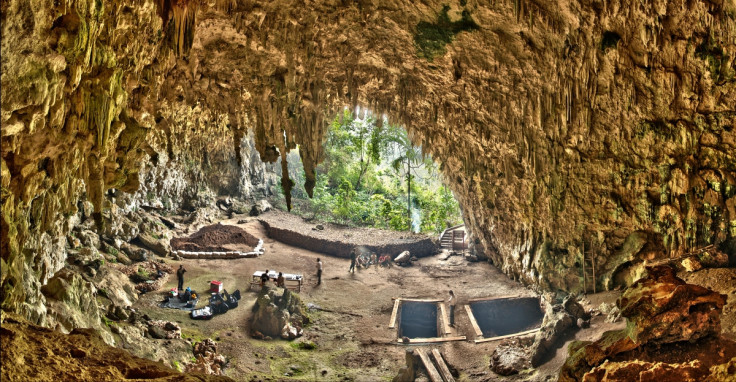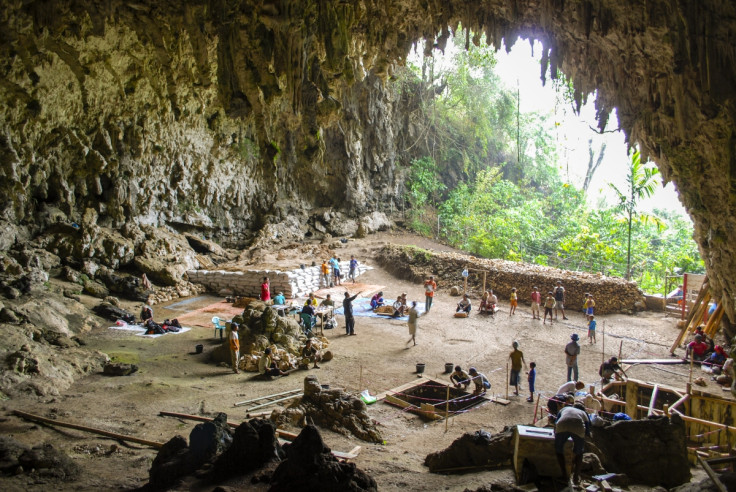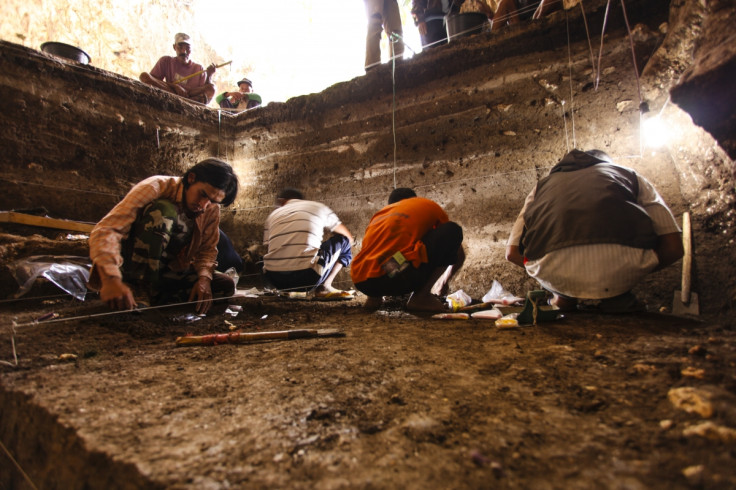Humans likely wiped out mystery 'hobbit' species from Flores 50,000 years ago
The mysterious 'hobbit' species found on the island of Flores, Indonesia, disappeared 40,000 years earlier than previously thought, scientists have discovered. The age of fossil remains from Homo floresiensis have been recalculated to show that the species vanished about 50,000 years ago, not 12,000 as had previously been thought.
This time period coincided with the time when modern humans arrived in the region. As a result, the researchers believe we likely drove them to extinction within a few thousand years of contact.
'Hobbits' were first discovered in 2003 in the Liang Bua cave. They had extremely small brains – about the same size as chimpanzees – and fully grown adults only reached around a metre (3.5ft) in height. In the decade that followed, scientists tried to establish if the hobbit was a new species of human, or if it was a modern human with some sort of development and/or growth disorder (such as microcephaly or dwarf cretinism).
Most recently, scientists have claimed that Homo floresiensis were a distinct species. French researchers carried out detailed analysis of their skull bones to show there are no matching characteristics to Homo sapiens (modern humans). However, the scientists also said they could be a 'scaled down' version of Homo erectus, which resided on the neighbouring island of Java millions of years ago.

In a study published in Nature, researchers have now reassessed the timeline of H. floresiensis. Obtaining a clearer picture of when the species disappeared will help scientists better understand what it was - and what happened to it.
Initial excavations had led researchers to believe that the hobbit remains and tools at the site dated between 12,000 and 95,000 years. This would have meant H. floresiensis survived long after modern humans arrived in Australia, 50,000 years ago.

However, an international team of scientists has now carried out further excavations at Liang Bua and exposed new parts of the caves where layers of sediment were not deposited evenly (a key indicator of fossil age). This led them to recalculate the age of the hobbit fossils as between 100,000 and 60,000 years, while the artefacts ranged between 50,000 and 190,000 years of age.
Lead author Thomas Sutikna said: "We didn't realise during our original excavations that the 'hobbit' deposits near the eastern wall of the cave were similar in age to those near the cave centre, which we had dated to about 74,000 years ago. As we extended our original excavations each year, it became increasingly clear that there was a large remnant pedestal of older deposits truncated by an erosional surface that sloped steeply toward the cave mouth."
According to researchers, whether or not hobbits came into contact with modern humans remains an "open and intriguing question", but it is likely the arrival of humans had something to do with their demise: "Homo floresiensis seems to have disappeared soon after our species reached Flores, suggesting it was us who drove them to extinction," said researcher Maxime Aubert.
Adam Brumm, who also participated in the study, added: "They might have retreated to more remote parts of Flores, but it's a small place and they couldn't have avoided our species for long. I think their days were numbered the moment we set foot on the island."

© Copyright IBTimes 2025. All rights reserved.






















